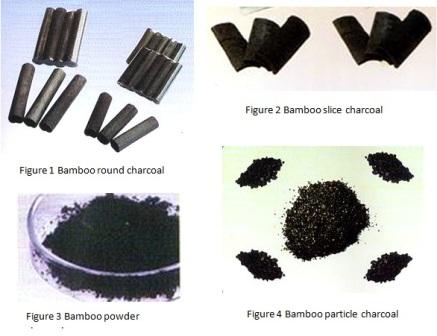Guest post: Shwetha Kamath (India Water Portal Volunteer)
About 74 per cent of India's total population, currently about 1.25 billion, live in rural areas. More than one third of the water available to them is not potable. In a grim reminder that poor quality of drinking water leads to serious health problems, India has admitted that about 180,000 rural populated areas are afflicted by diseases which are caused due to impure, toxic organic and inorganic substances including tri-halo methane, chlorine, etc. Some states have reported multiple contaminations in drinking water and there is no doubt that the current water situation in India will get much, much worse unless suitable solutions are sought. Most existing purification methods not only remove the impurities but drain out the essential minerals as well. Moreover, they are expensive and require extensive maintenance. Thus a natural filter comprising of bamboo, gravel, pebble and other locally available natural adsorbents is a great alternative to carry out water purification. What makes this filter unique is the use of bamboo charcoal which is not commonly used in any filter designed for domestic purposes.
The use of bamboo charcoal for water filtration goes back to ancient China and Japan, where it was said to "sweeten" the water for tea, but in terms of chemistry, bamboo charcoal is an outcome of pyrolyzing bamboo and is found to be a sort of porous material with excellent adsorption, electromagnetic shielding, and infrared emitting capacity.
 According to its shape, bamboo charcoal can be classified into round (Fig. 1), slice (Fig.2), particle (Fig.3) and powder charcoal(Fig.4)According to its use, bamboo charcoal can be divided into water depuration, humidity adjustment, odour adsorption, health care, agriculture, fuel of barbecue etc.
According to its shape, bamboo charcoal can be classified into round (Fig. 1), slice (Fig.2), particle (Fig.3) and powder charcoal(Fig.4)According to its use, bamboo charcoal can be divided into water depuration, humidity adjustment, odour adsorption, health care, agriculture, fuel of barbecue etc.
Properties of Bamboo Charcoal
- Bamboo charcoal’s chemical composition and physical structure both contribute heavily to its strength as a water filter. It is 85-98% carbon, the same substance used in most modern filtration methods. Its structure is very porous, so it can absorb and retain impurities easily.
- Bamboo charcoal is rich in a number of minerals including potassium, magnesium, sodium and calcium. As it filters water, its minerals are dissolved and it enriches the water.
- Unlike modern carbon filters, bamboo charcoal has the added benefit of a built-in team of microbes working to decompose toxic substances like tri halo methane and chlorine. These harmless microbes can flourish in bamboo and bamboo charcoal, despite its inherent antibacterial effects, which are unique to bamboo and are referred to as "Bamboo Kun." Bamboo Kun is an anti-bacterial and anti-fungal bio-agent that naturally bonds to bamboo cellulose without killing its beneficial microbes. Thus water is naturally cleared of toxic substances, bacteria and fungi.
- Bamboo charcoal releases a type of electromagnetic wave called Far Infrared Waves (FIR), at wavelengths ranging from 4 to 16 micrometres. It is absorbed by all organic material. The human body absorbs its entire range and can absorb up to 50 micrometres ion wavelength. The rays produce a warming effect on the body, similar to the rays of the sun, and can improve circulation substantially. We don’t get this effect from the water but from the presence of the charcoal itself.
- Unlike the beneficial FIR, Electromagnetic Waves (EM) are harmful to the body in large amounts. They are produced by electrical appliances such as computers, microwave ovens, cell phones, and televisions. Bamboo charcoal has been shown to dissipate EM waves too.
Bamboo charcoal is also best used with bottled water because it enhances the taste and adds the ‘fizz’ that tells you that the water has been cleaned and mineralized. Once you’re done filtering your water, you can reuse the bamboo charcoal by placing it out in direct sunlight for three hours in order to allow it to shed its impurities. Charcoal can be used all over again for up to a year in this fashion. It gives your body the minerals it needs, and you don't have to spend a lot of money on vitamin supplements or expensive mineral/vitamin water.
Apart from the use of bamboo, we also use gravel and pebbles in various stages to aid particle sedimentation and thus further purification. By exposure to sunlight, UV rays also play their role in the filtering and purification process, because of their capacity to kill pathogenic bacteria and thus maintain the quality of treated water.
Uniquely, this filter is indigenous, eco-friendly, low cost and entails minimum maintenance. It can purify about 30 litres of water per hour by the application of batch process method under maximum sunlight.
Since this purifier is low cost, entails minimum maintenance and can be easily manufactured with locally available resources, it can radically alter purification of water in rural areas. It thus has the potential to help avoid the many adverse health effects that impure water can cause or spread.